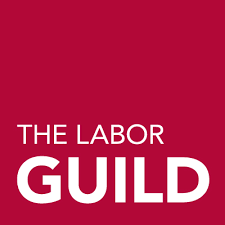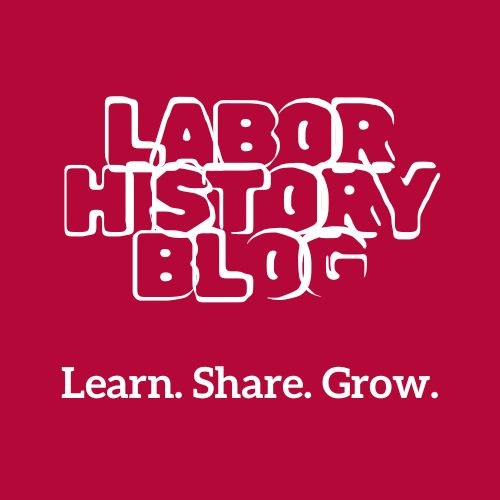April 2024 Labor History Blog: The Ludlow Massacre
by David Kowalski, Former Executive Director of The Labor Guild
The Gilded Age
From the immediate post-Civil War period into the 1900’s we entered what was called the “Gilded Age”. This definition of gilded is somewhat like what we view as payment, or yield. However, Merriam-Webster says this definition meant:
1. To overlay with a thin covering of gold.
2. a. To give money to.
b. To give an attractive but often deceptive appearance to.
c. Archaic: to make bloody.
During this period, all of these were true.
In earlier discussions I stated that capitalism needed a strong legal system in order to survive. The adoption of English property rights law provided the nutrients necessary for strong roots for the corporate model to grow through the latter part of the 19th century. However, this growth was left unchecked and in need of pruning. I know sometimes I may sound like a Socialist Democrat; however, I do believe that there is nothing wrong with the Capitalist system that a strong dose of regulation can’t cure.
There was a huge gap between the rich and the poor and Industrialists were exploiting workers to the point of rebellion. It showed as the Western Federation of Miners tried to organize workers in the West as well as the United Mineworkers did in both the East and West. None were successful until the enactment of labor laws in the 1930’s. From the 1860’s through the 1930’s there were bloody battles over organizing against the hired guns of mine owners and their Company town.
The Ludlow Massacre
Like the rest of Labor, miners in Colorado were trying to wrestle decent pay and working conditions from the Rockefeller family that owned Colorado Fuel and Iron and the mine in Ludlow. The class consciousness was crystal clear between the people who owned wealth and those who were a commodity of the wealthy. Though attempts were made earlier in the 1880’s to join the Western Federation of Miners, it was now the United Mine Workers time to complete the task.
Tensions rose when a union activist was killed in 1913. Workers vacated the camp in protesting low wages, poor working conditions and harassment of union activists. Workers were paid $1.68 per day usually in Company script, that was worth even less when paying the higher prices in the Company store.
Fatality rates at Ludlow were double the national average when the miners struck in 1913. The demands of the strikers were:
- Recognize UMW as bargaining agent.
- An effective way to weigh coal with the use of a “checkweighmen.”
- The rate of payment for digging coal based on 2,000lbs to equal 1 ton.
- Abolish payment of wages in scrip.
- To run the mine in accordance with state laws.
- Supply the miners with the timber and rails material necessary to do their work.
The UMW leased land near the entrance of the canyon of the mine to confront strikebreakers and set up a tent city where they spent the winter. Rockefeller hired strikebreakers and guards to step up the pressure on the strikers which led to harassment and beatings. A machine gun was mounted on a train called the “Death Special” and was wheeled out on October 17, to fire upon the tent city.
The result was one miner dead, a young girl shot in the face and a boy’s leg riddled with machine gun bullets. The next day Gov. Elias M. Ammons called on the National Guard to take control of the situation. Shots were still fired into the camp and union men were kidnapped and beaten. The strikers dug pits inside the tents to where they could be protected from the incoming fire. As the strike dragged on, the Governor became concerned over the cost to the State for the Guardsmen to be deployed, and accepted Rockefeller’s offer to place Rockefeller’s men in National Guardsmen’s uniforms and take over the expense of the operations.
On March 10, 1914, the body of a strikebreaker was found on the railroad tracks near the tent city. The order from the Guard’s commanding officer General Chase was to remove and destroy the tent city, even though it was on private property. Then on April 20th armed with the “Death Special”, the guards opened fire on the workers in a battle that lasted nearly fourteen hours.
When the camp’s organizer Louis Tikas met with the officer in charge, Lieutenant Linderfelt, Tikas was knocked down with a rifle butt and was shot several times as he lay on his back. Forever known as one of the most brutal attacks on organized labor, miners across the nation went on strike to show sympathy to the few miners left at Ludlow. In the end the workers’ demands were never met, the mineworkers were replaced with strikebreakers, and no one was ever prosecuted for the massacre.
Today a memorial stands in Ludlow with the names of the 17 victims. Let me name 10:
- William Snyder Jr. age 11
- Rigerlo Pedregone age 6
- Cloriva Pedregone age 4
- Onafrio Costa age 4
- Joe Petrucci age 4 ½
- Lucy Petrucci age 2 ½
- Frank Petrucci age 4 months
- Eulala Valdez age 8
- Mary Valdez age 7
- Elvira Valdez age 3 months
No man or Corporation is above the Law.
Join Our Mailing List
For Guild news, Labor School updates, Workshops, and CGA information.

